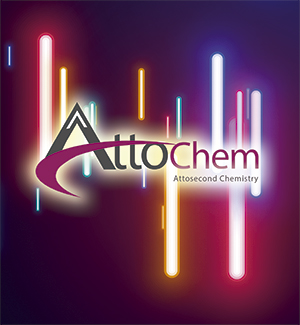Francesca Calegari vice-chairs a new international network on Attosecond Chemistry
Francesca Calegari leading scientist at DESY and professor at the Universität Hamburg is vice chair of a new EU-funded international network on attosecond chemistry.
Francesca Calegari, leading scientist at DESY and professor at the Universität Hamburg is vice chair of a new EU-funded international network on attosecond chemistry. The aim of the AttoChem network is to investigate the course of chemical reactions using attosecond laser beams. The research network has been established in the framework of The European Cooperation in Science and Technology (COST), whose mission is to provide networking opportunities for researchers and innovators in order to strengthen Europe’s capacity to address scientific, technological and societal challenges.

Francesca Calegari leads the Attosecond Science group at the Center for Free-Electron Laser Science (CFEL) and is a member of the cluster of excellence “CUI: Advanced Imaging of matter”. The main focus of her research is to track and ideally control in real time the electron dynamics occurring in systems with increasing complexity from simple molecules to molecules of biological interest and nanostructured materials. Her group develops table-top light sources providing extreme time resolution from a few femtoseconds down to attoseconds.
The new AttoChem network will internationally coordinate the experimental and theoretical efforts to exploit the large potential of attosecond techniques in chemistry. “We expect the recent developments of ultrashort intense light sources operating in the XUV and X-ray spectral regions to revolutionize chemistry”, Calegari says. These light sources will give access to dynamical processes occurring in the attosecond time scale (1 asec = 10-18 s), the natural time scale for electronic motion in atoms and molecules.
The scientists hope to be able to address new fundamental questions about the role and possible control of electron dynamics in chemical reactivity, to investigate photoinduced charge migration in relevant molecular systems, and to image, with asec resolution, fast structural changes in molecules during proton transfer, isomerization, or motion through conical intersections. The results are expected to have a significant impact in several areas of chemistry, such as photovoltaics, radiation damage, catalysis, photochemistry, or structural determination.
The network will initially last for a period of four years, and the first annual meeting will be held on March 18-20, 2020 in Cluj-Napoca, Romania.